Want to set off on a multi-day trek in Europe without having to lug around a heavy backpack and pitch a tent every night? Hut-to-hut hiking is the perfect compromise! This style of hiking allows you to explore the continent’s finest hiking trails by day, and then retreat to a cosy mountain refuge and sleep in a proper bed every night.
If this sounds like your ideal trekking scenario, read on for everything you need to know about hut-to-hiking in Europe, from top tips to essential items to pack and some of the best trails for a hut-hopping adventure.
- Hut-to-hut hiking in Europe: what to expect
- What to pack for a hut-to-hut hiking trip
- Tips for a hut-to-hut hiking trip in Europe
- 5 of the best hut-to-hut hikes in Europe
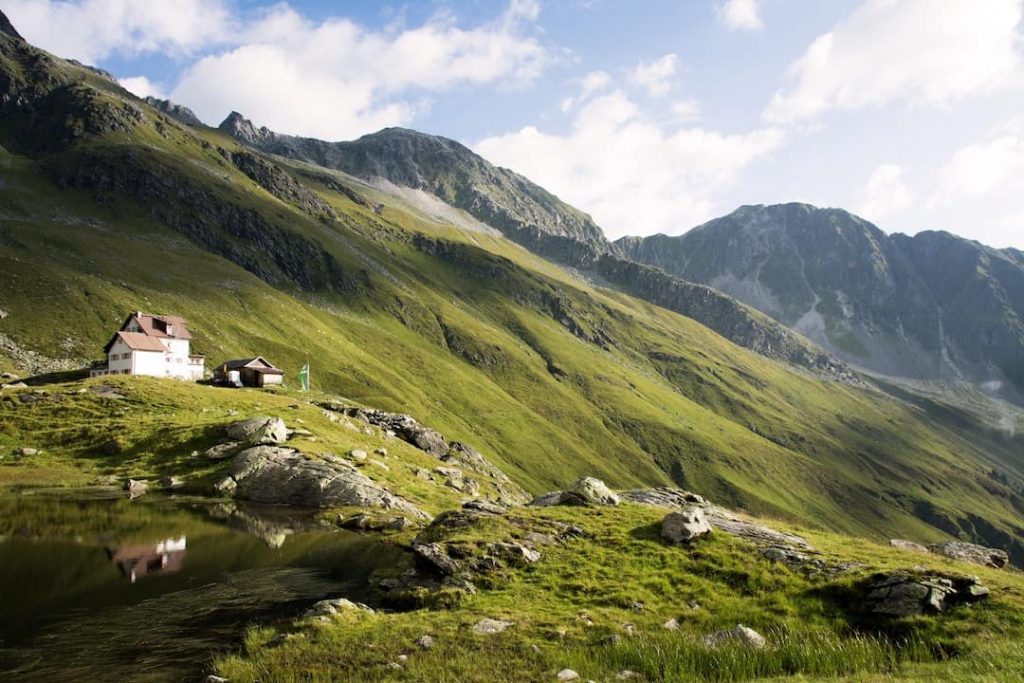
Hut-to-hut hiking in Europe: what to expect
Hut-to-hut hiking involves trekking along an established trail during the day and crashing at a backcountry lodge come nightfall. Mountain huts are scattered across Europe, from the Alps to the Dolomites and beyond, and range from basic shacks with shared sleeping areas to elaborate lodges with private quarters and hot showers.
Amenities and comfort levels vary widely depending on the destination, but most huts provide a roof, a bunk bed with a mattress, a stove, and a flushable toilet. Inside, the atmosphere is similar to a hostel, with communal kitchens and bathrooms, and an overall feeling of camaraderie. While mattresses and pillows are provided, you’ll usually be required to bring your own sleeping bag liner.
The main advantage of hut-to-hut hiking? There’s no need to carry a tent, sleeping bag, or camping stove; these systems of lodges and trails allow you to hike for several days with just a daypack of essentials. And when it comes to food, you certainly won’t go hungry: hut-to-hut hiking in Europe typically means you’ll be indulging in hearty local food accompanied by a fine glass of wine at the end of each day. In the Alps, for example, many huts have staffed kitchens that serve up multi-course dinners every night. The food is delicious, and it’ll taste even better after a long day on the trail.
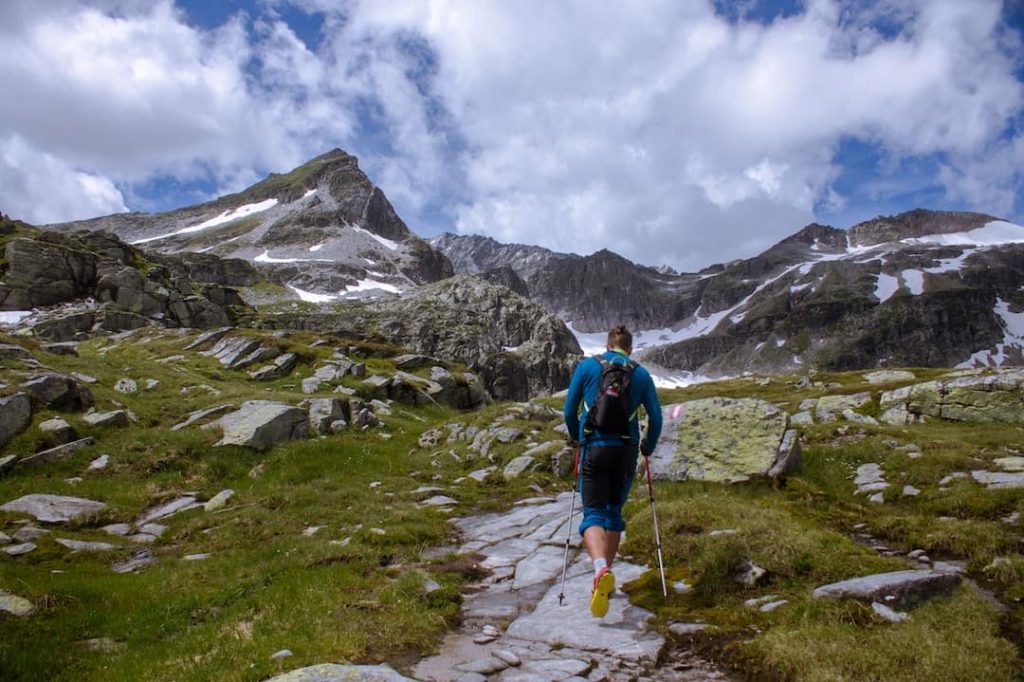
What to pack for a hut-to-hut hiking trip
Like any multi-day trek, a hut-to-hut hiking trip means finding the right balance between being prepared for a whole host of terrain and weather conditions without overpacking (which is certainly easier when you don’t have to worry about bringing any camping gear).
The sample packing list below covers some of the basic hiking items and essentials you’ll need for a hut trek. Ultimately, your destination, the length of your trip, and the time of year you’re planning to travel will be the main determining factors when deciding exactly what to bring.
- Medium-sized, lightweight backpack and rain cover (we like this one)
- Trekking poles
- Sturdy hiking boots
- Gaiters/crampons (if necessary)
- Rain jacket, fleece mid-layer, insulating layer
- Two-litre water bottle or hydration system
- Energy bars and snacks
- Sleeping bag liner
- First aid kit
- Sleeping clothes
- Sunglasses and sunscreen
- Brimmed hat
- Trail maps and a compass
- Multifunctional knife
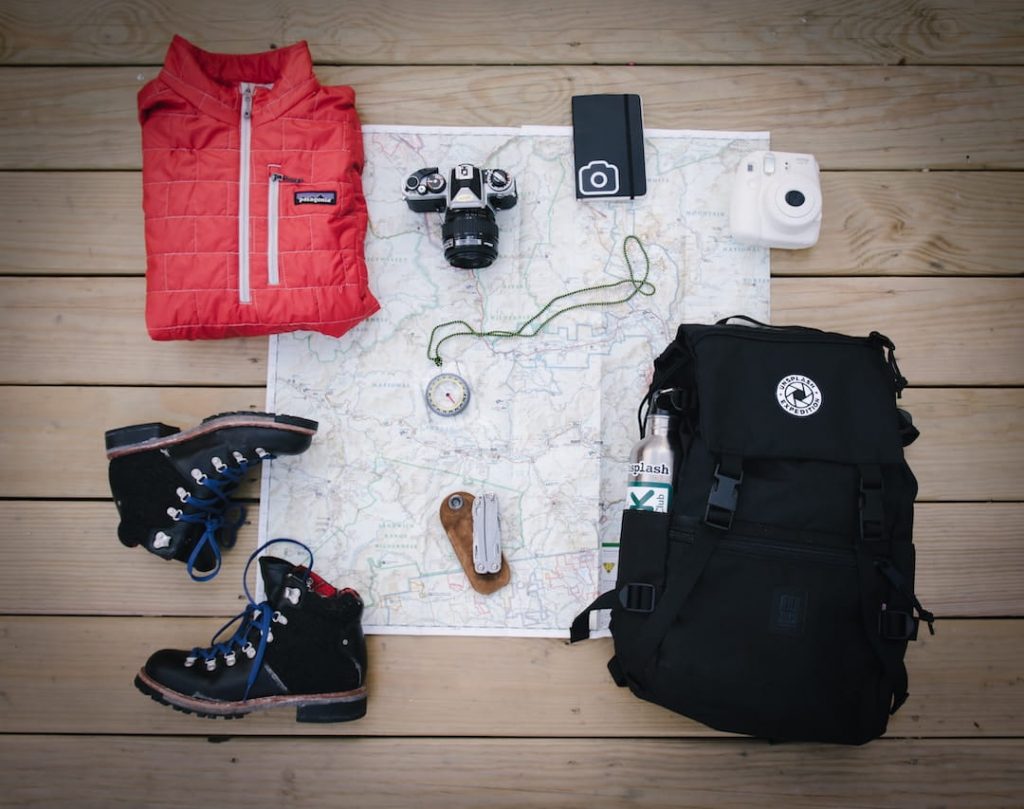
Tips for hut-to-hut hiking in Europe
- Choose a destination that matches your skill level and physical fitness. Some routes in Europe are suited to beginners, while others may involve challenging terrain like steep, rocky ridges or glaciers.
- Reserve your huts well in advance. Reservations aren’t necessarily required, but some of the lodges can get very busy, especially during peak season.
- Plan, plan, plan. Look at a map and plan out your route in advance. Determine the distances between huts and where you can take rest stops.
- Choose your trekking season wisely. Too much rain could lead to trail closures, while hot weather conditions may leave you feeling exhausted. And always remember to do a last-minute weather check before you leave.
- Join a guided tour. If it’s your first time trying hut-to-hut hiking and you’re feeling overwhelmed at the thought of a multi-day trek, consider joining a group tour and let an experienced mountain guide show you the ropes.
- Pack a sleeping bag liner. The huts provide bedding, but you’ll need to bring a sleeping bag liner. Lots of travellers love this sleeping bag liner.
- Bring cash! Most huts only accept cash, so research the prices ahead of time and be sure to bring enough cash to cover all expenses. Invest in a secure travel wallet to keep your money and documents safe and sound.
- Don’t forget hut slippers and earplugs. Slippers (or comfy indoor shoes) and earplugs will come in handy when you’re settled into the hut in the evenings.
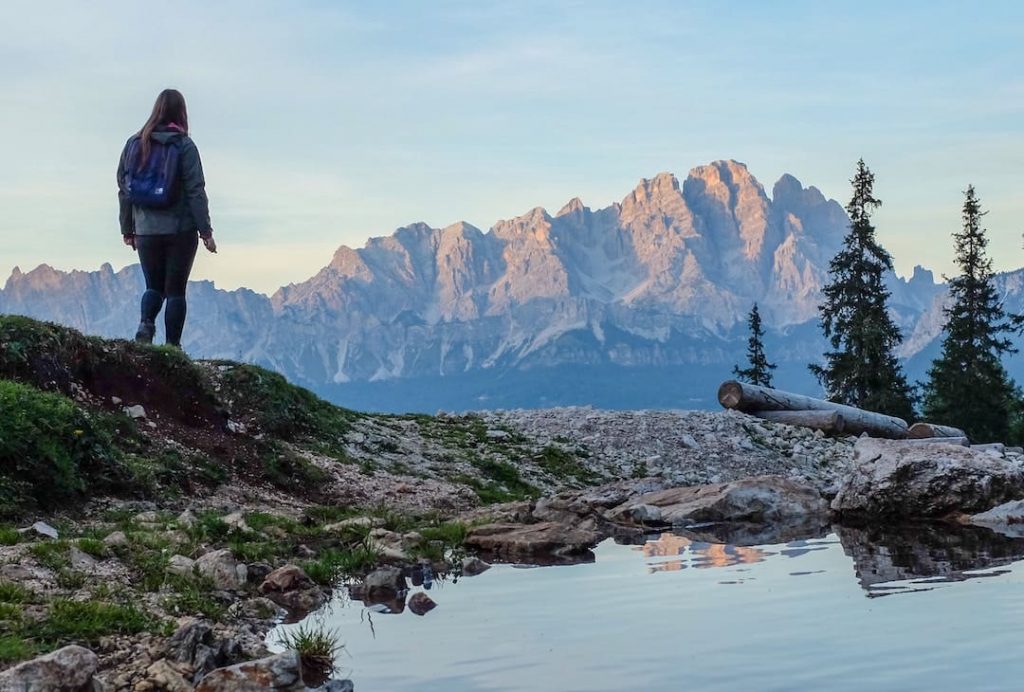
5 of the best hut-to-hut hikes in Europe
With several world-class hiking regions boasting a network of top-notch refuges, there’s a hut-to-hut adventure to suit hikers of all skill levels in Europe. Here are a few of our favourites:
1. Tour du Mont Blanc
- Countries visited: France, Italy, and Switzerland
- Difficulty level: Moderate to difficult
- Number of days: 11
Winding through the peaks and valleys of the Western Alps and crossing three countries, the Tour du Mont Blanc is one of the greatest hut-to-hut hikes in the world. This route circles the Mont Blanc massif, spanning a distance of roughly 170 kilometres including a cumulative ascent and descent of 10,000 metres (32,808 ft). With each dramatic pass, you’ll hike through stunning terrain that consists of glacial valleys, glistening turquoise lakes, and secluded alpine villages.
2. Walker’s Haute Route
- Countries visited: France and Switzerland
- Difficulty level: Difficult
- Number of days: 14
Starting in Chamonix and ending in Zermatt, this world-renowned route takes you on a journey between two of Europe’s most iconic mountains: Mont Blanc and the Matterhorn. Although it’s easy to follow, this route is physically demanding; you’ll have to cross several high passes and tackle more than 12,000 metres (39,370 ft) of combined altitude gain and loss. The reward, though, is the magnificent scenery you’ll pass along the way, from snow-capped peaks to alpine meadows blanketed in wildflowers and storybook villages.
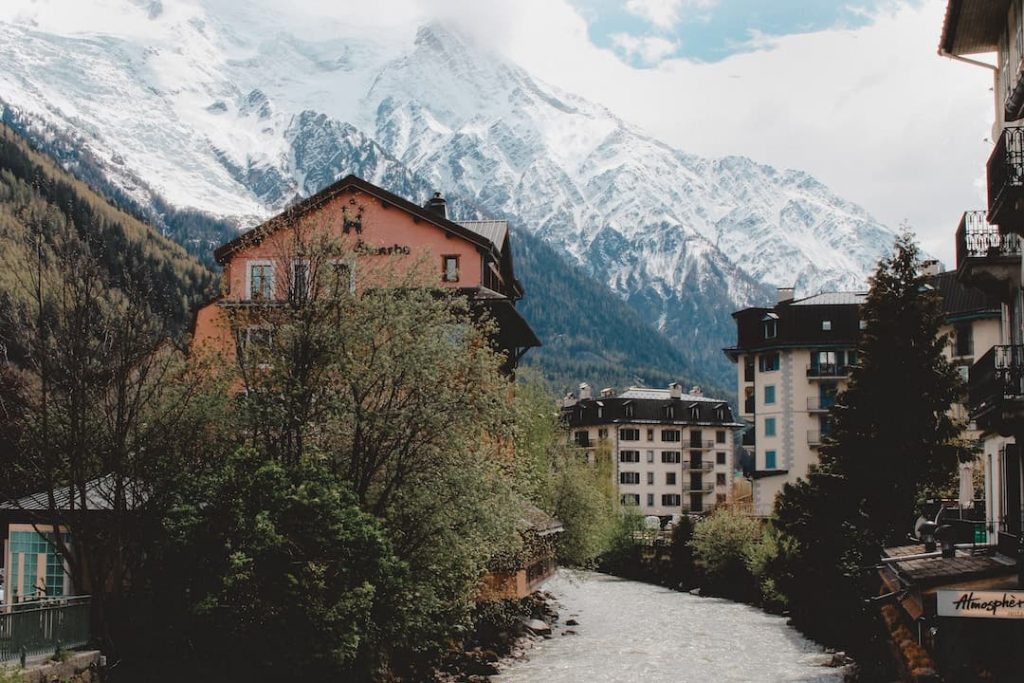
3. Slovenian Mountain Trail
- Countries visited: Slovenia
- Difficulty level: Moderate
- Number of days: 28 days for the entire route (but it can be divided into smaller stages)
The longest and most popular long-distance trail in the country, the Slovenian Mountain Trail begins in Maribor and extends across all the alpine ranges in Slovenia, including the Kamnik and Savinja Alps, the Karavanke Alps, and the Julian Alps. Each of these plateaus offers exceptional views, revealing staggering peaks, valleys, and forests before ending in the village of Ankaran along the Adriatic Coast.
Invest in a sturdy pair of waterproof hiking boots.
4. Alta Via 1
- Countries visited: Italy
- Difficulty level: Moderate
- Number of days: 8
Otherworldly limestone cliffs, vast meadows, and pristine alpine lakes are only a few of the spectacular sights you can expect to see on a hike along the Alta Via 1, a premier trail that guides hikers through the dramatic Dolomites mountain range in northeastern Italy. The Dolomites aren’t the most famous peaks in Western Europe by any measure, but they are staggeringly beautiful, incredibly unique, and an absolute must-visit destination in Italy’s northern region.
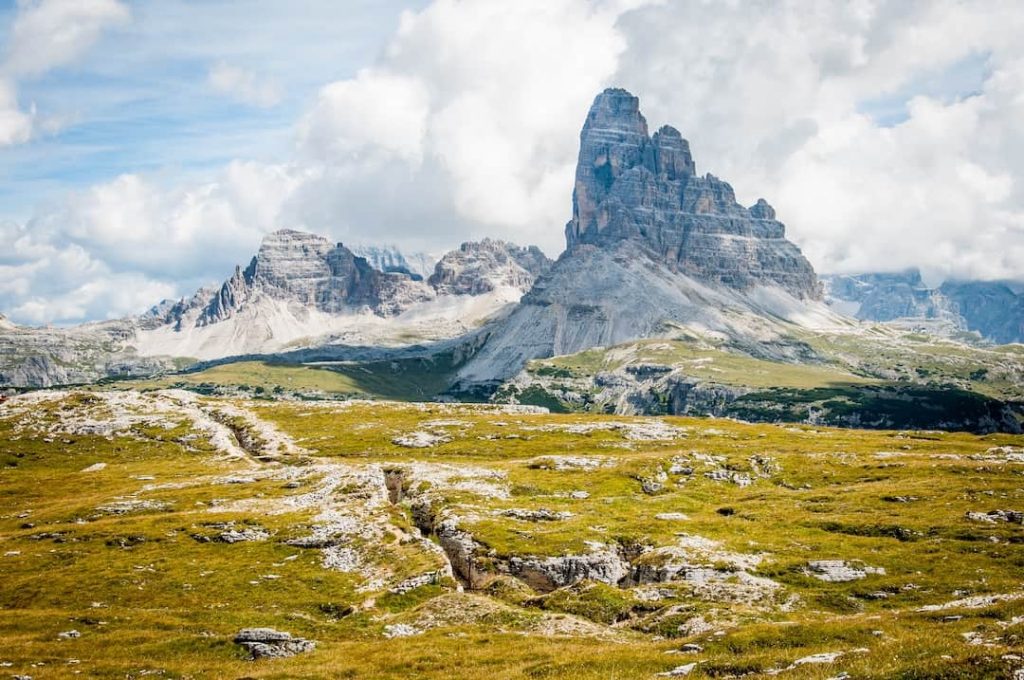
5. The Eagle Walk
- Countries visited: Austria
- Difficulty: Moderate
- Number of days: Anywhere from 1 to 24
Running through Austria’s Tyrol region, this 33-stage trail stretches from east to west and is shaped like an eagle with its wings outstretched. There are varying lengths and difficulties on offer, so you can choose to conquer the entire trail or take on a smaller section. Either way, the varied vistas of this aptly named route will leave you in awe.
Have you tried hut-to-hut hiking? What’s your favourite hiking destination? Share in the comments!


